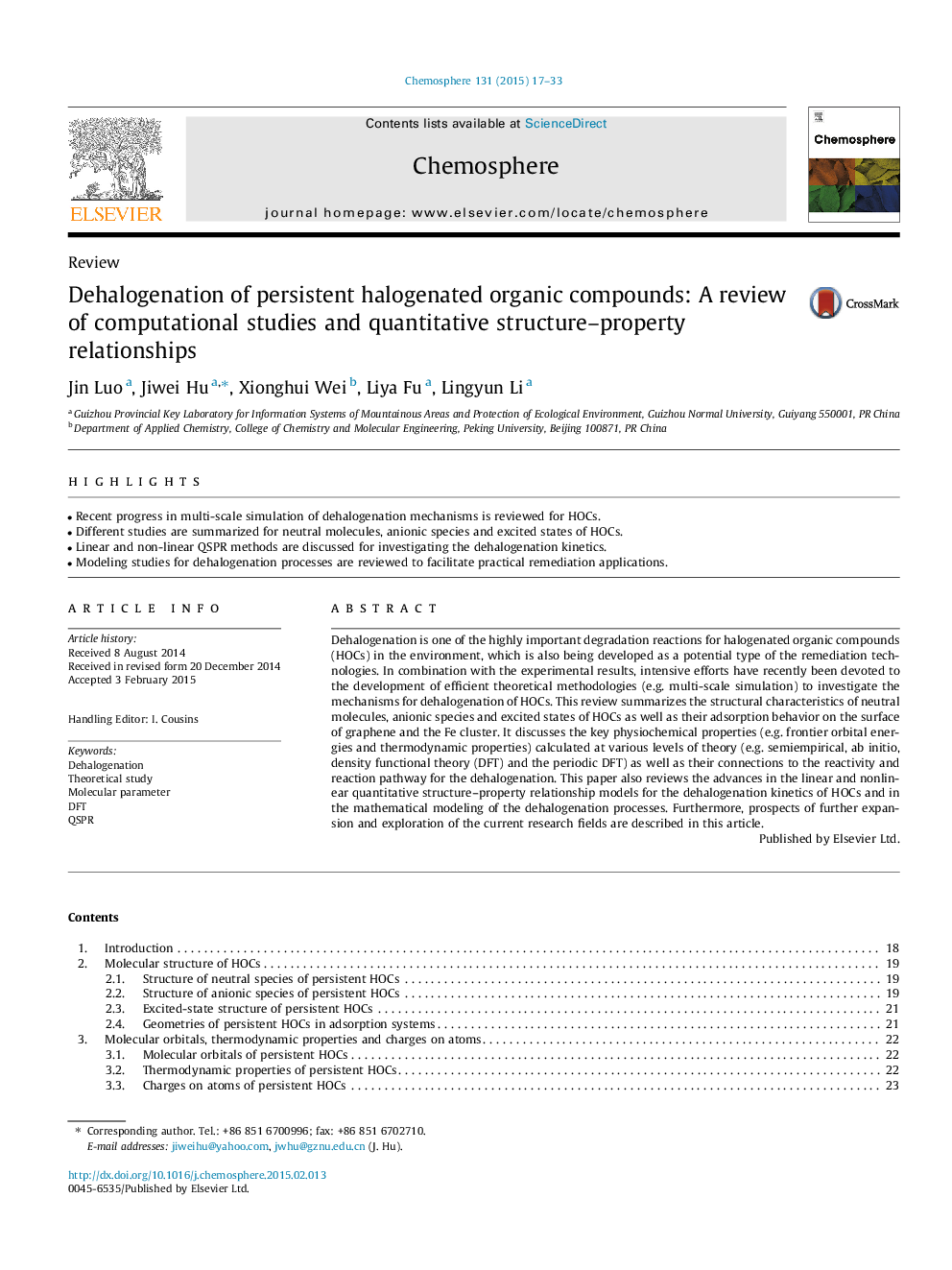| Article ID | Journal | Published Year | Pages | File Type |
|---|---|---|---|---|
| 6307986 | Chemosphere | 2015 | 17 Pages |
Abstract
Dehalogenation is one of the highly important degradation reactions for halogenated organic compounds (HOCs) in the environment, which is also being developed as a potential type of the remediation technologies. In combination with the experimental results, intensive efforts have recently been devoted to the development of efficient theoretical methodologies (e.g. multi-scale simulation) to investigate the mechanisms for dehalogenation of HOCs. This review summarizes the structural characteristics of neutral molecules, anionic species and excited states of HOCs as well as their adsorption behavior on the surface of graphene and the Fe cluster. It discusses the key physiochemical properties (e.g. frontier orbital energies and thermodynamic properties) calculated at various levels of theory (e.g. semiempirical, ab initio, density functional theory (DFT) and the periodic DFT) as well as their connections to the reactivity and reaction pathway for the dehalogenation. This paper also reviews the advances in the linear and nonlinear quantitative structure-property relationship models for the dehalogenation kinetics of HOCs and in the mathematical modeling of the dehalogenation processes. Furthermore, prospects of further expansion and exploration of the current research fields are described in this article.
Related Topics
Life Sciences
Environmental Science
Environmental Chemistry
Authors
Jin Luo, Jiwei Hu, Xionghui Wei, Liya Fu, Lingyun Li,
